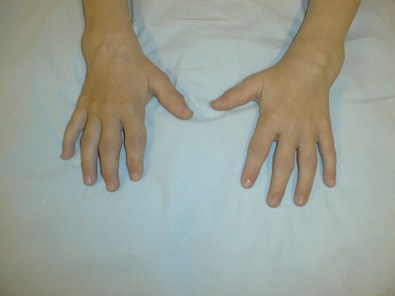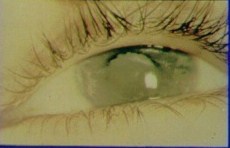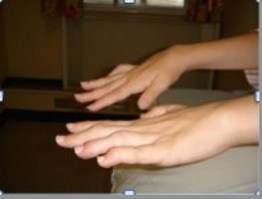Early Diagnosis Makes a Difference
The emergence of biologic agents, as well as earlier and more aggressive treatment approach, has dramatically changed the way that JIA is managed.
Many children will do very well on treatment and will go into disease remission.
Key to a good clinical outcome is prompt diagnosis and referral to a specialist paediatric rheumatology service. .
As soon as JIA is suspected, early referral to specialist teams facilitates prompt treatment and prevention of complications including joint damage, contractures, and disability. There has been a trend for several years to minimise exposure to systemic corticosteroids which can have side effects (growth retardation, osteoporosis, weight gain and skin changes (striae and hirsutism), cataracts and adrenal suppression).
The photographs below demonstrate examples of joint damage before the advent of current treatment approaches; these complications are now uncommon where such treatments are available and children are diagnosed quickly and are managed by specialist centres.
The photograph below shows extensive joint swelling and deformity in the hands and wrists.
The child had polyarticular JIA.

The photograph below shows a blind eye with cataract from chronic anterior uveitis.

The photograph below shows finger contractures, subluxation at the wrists due to chronic, untreated arthritis


